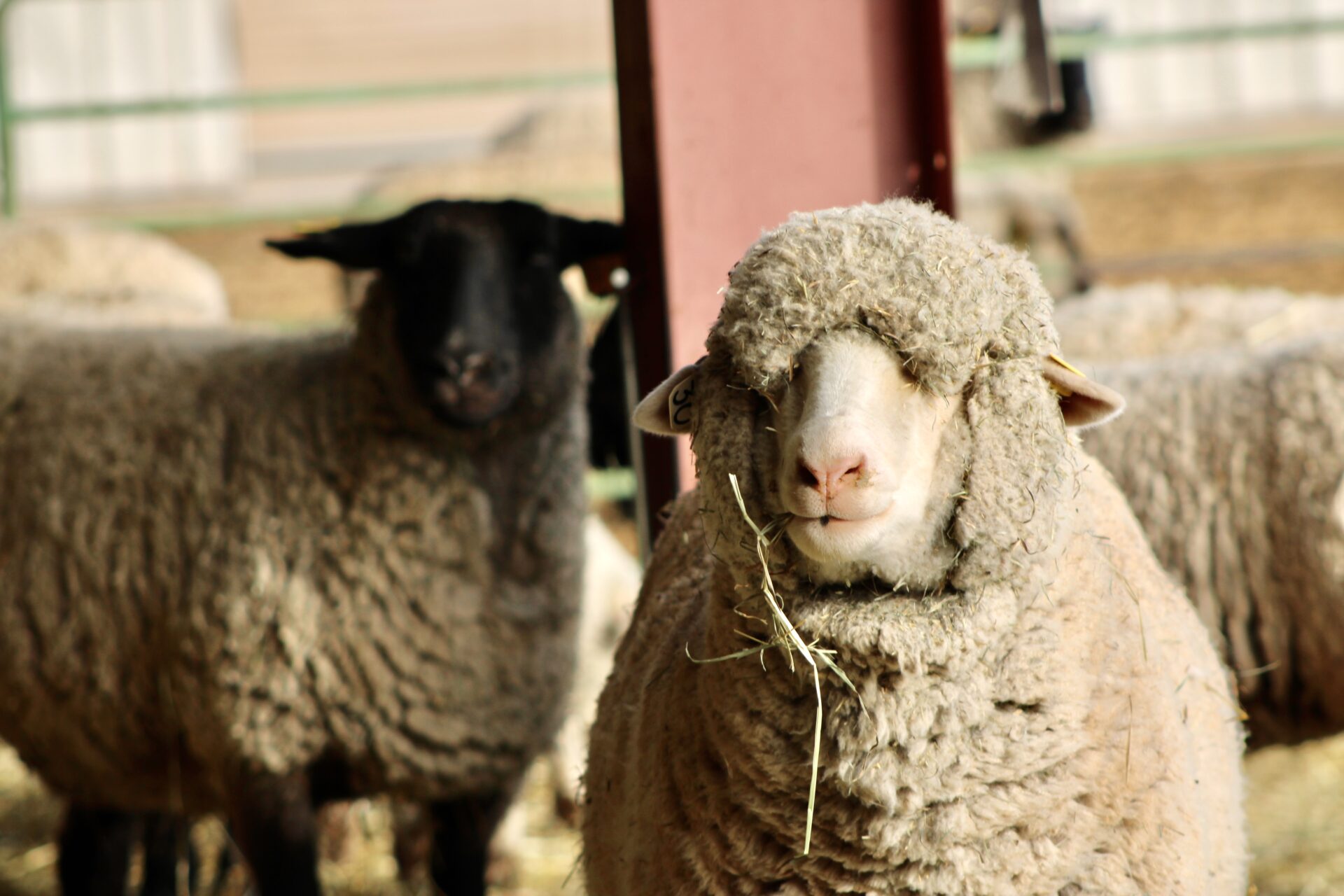
Animal health is broadly defined as “the absence of disease or the normal functioning of an organism and normal behavior” (Ducrot et al., 2011). Animal health is one of the key factors of sustainability, with over 20% of global animal protein lost to disease (OIE, 2008). Animal health plays a vital role in sustainable livestock farming by balancing three necessary components – environmental responsibility, economic viability, and social acceptability (Capper., 2012., Kenyon et al., 2013).
Economic viability results from efficient milk, meat, or egg production relative to inputs. Livestock that are diseased or parasitic can have reduced performance, resulting in reduced efficiencies (Kenyon et al., 2013). When an animal is not at its healthiest state, they may consume less feed than maintenance or production nutrient requirements which, in turn, would result in animals producing less milk, fewer eggs or gain less weight per day. Disease may also affect reproductive performance, which would result in fewer animals being sent to harvest. Disease could also reach the point of death or result in negative effects on product quality (Schneider et al., 2009).
Improving productivity reduces both resource use and greenhouse gas emissions per unit of livestock product (Capper., 2012). Healthy animals are more productive, which means they produce more food and/or grow at a faster rate, which reduces the environmental impact (Capper., 2012, Kenyon et al., 2013). For example, the environmental impact of porcine respiratory and reproductive syndrome, a disease in swine, yields a 15% reduction in annual output which, in turn, increases resource use per unit produced (Holtkamp et al., 2013).
The third pillar of sustainability is social acceptability. Public acceptability is the root of many concerns about the economic and environmental sustainability of livestock production. For the public, animal health is a component of the animal welfare that occurs on farms (Clark et al., 2017). Consumers are concerned about specific factors that affect the health and wellbeing of livestock, for example, the use of antimicrobials and husbandry practices. For livestock producers, continued improvement of animal health and welfare is required to maintain social sustainability.
Healthy cattle are the most productive and economically viable (Capper., 2012, Kenyon et al., 2013). Producers work to keep their animals healthy in many ways, by including the implementation of vaccination and deworming protocols, reducing stress, utilizing best management practices, etc. One way to prevent disease is through vaccination. Vaccines are used to preserve animal health and improve production. Roth (2011) states that veterinary vaccines are a cost-effective method to prevent animal disease, enhance the efficiency of food production, and reduce or prevent transmission of zoonotic and foodborne infections to humans. Another good management practice that producers may use is implementing a deworming program into their herd or flock. Effective parasite control as part of an animal health program is essential for peak productivity and effective resource use (Kenyon et al., 2013, Vercruysse et al., 2018). Most agricultural problems arise from accidental introductions (Waage and Mumford, 2007). Therefore, producers may also use preventative measures such as incorporating a biosecurity plan to reduce the risk of spread of animal disease on and off the farm. It is important that producers work in collaboration with their veterinarians to reduce the losses caused by animal diseases (OIE, 2008).

Dr. Kim Stackhouse-Lawson
Director of AgNext
Written by Mesa Kutz, Logan Thompson Ph.D., and Kim Stackhouse-Lawson Ph.D.
Sources:
Capper, J.L. 2012. Is the Grass Always Greener? Comparing the Enviornmental Impact of Conventional, Natural and Grass-Fed Beef Production Systems. Animals, 2, 127-143.
https://doi.org/10.3390/ani2020127
Clark, B., Stewart, G.B., Panzone, L.A., Kyriazakis, I., and Frewer, L.J. 2017. Citizens, consumers and farm animal welfare: A meta-analysis of willingness to pay studies. Food Policy, 68, 112-127.
https://doi.org/10.1016/j.foodpol.2017.01.006
Ducrot, C., Bed’Hom, B., Beringue, V., Coulon J. B., Fourichon, C., Guerin, J. L., Krebs, S., Rainard, P., Schwartz-Cornil, I., Torny, D., Vayssier-Taussat, M., Zientara, S., Zundel, E., and Pineau, T. 2011. Issues and special features of animal health research. Veterinary Research. 42, 96.
https://doi.org/10.1186/1297-9716-42-96
Holtkamp, D.J., Kliebenstein, J.B., Neumann, E.J., Zimmerman, J.J., Rotto, H.F., Yoder, T.K., Wang, C., Yeske, P.E. Mowrer, C.L., and Haley, C.A. 2013. Assesment of the economic impact of porcine reproductive and respiratory syndrome virus on United States pork producers. Journal of Swine Health and Production, 21, 72-84.
Kenyon, K., Dick, J.M., Smith, R.L., Coulter, D.G., McBean D., and Skuce, P.J. 2013. Reduction in Greenhouse Gas Emissions Associated with Worm Control in Lambs. Agriculture, 3, 271-284.
https://doi.org/10.3390/agriculture3020271
OIE. 2008. Feeding the world better by controlling animal diseases. https://www.oie.int/en/feeding-the-world-better-by-controlling-animal-diseases/ Accessed 18th August 2021.
Roth, J.A. 2011. Veterinary vaccines and their importance to animal health and public health. Procedia in Vaccinology, 5, 127-136.
https://doi.org/10.1016/j.provac.2011.10.009
Schneider, M.J., Tait, R.G., Busby, W.D., and Reecy, J.M. 2009. An evaluation of bovine respiratory disease complex in feedlot cattle: Impact on performance and carcass traits using treatment records and lung lesion scores. Journal of Animal Science, 87, 1821-1827. Doi: https://doi.org/10.2527/jas.2008-1283
Vercruysse, J., Charlier, J., Van Dijk, J., Morgan, E.R., Geary, T., Samson-Himmelstjerna, S.V., and Claerebout, E. 2018. Control of helminth ruminant infections by 2030. Parasitology, 145, 1655-1664. https://doi.org/ 10.1017/S003118201700227X
Waage, J.K. and Mumford, J.D. 2007. Agricultural biosecurity. Biological Sciences Doi: https://doi.org/10.1098/rstb.2007.2188
